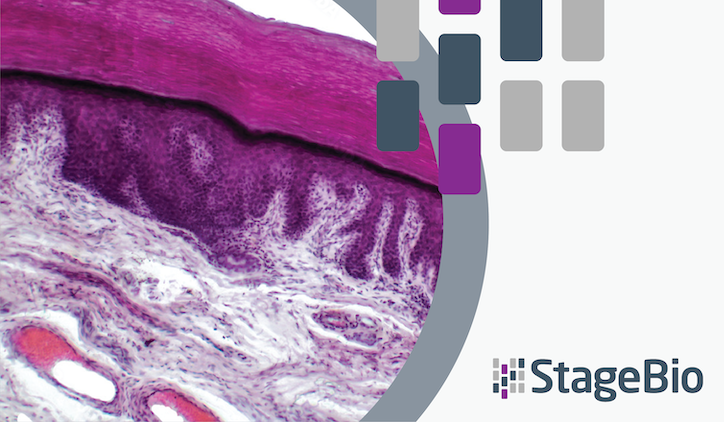StageBio Director of Digital and Quantitative Pathology Thomas Lemarchand, DMV, DESV-AP, PhD, DECVP, recently co-authored a study that successfully demonstrated the effectiveness of a highly standardized porcine model for assessing dermal and epidermal wound healing.
Published in the International Journal of Molecular Sciences, the study establishes a reproducible, standardized porcine wound model that would enable pathologists to more accurately assess wound healing and compare results across studies.
To achieve a higher level of standardization in a porcine wound model, Lemarchand and his co-authors evaluated several factors that are considered during experimental design. These factors include animal characteristics (e.g., age, weight) and wounds (e.g., size, depth, position). The study also assessed how different methods (e.g., tissue sampling, sampling sites) may influence the results of histomorphology and morphometric analyses.
Study design and histological assessment
The study included a seven-day evaluation of the excision wound healing of 11 female domestic pigs. Thomas Lemarchand conducted a blind analysis of the hematoxylin and eosin (H&E)-stained wound sections to assess new epidermis and dermis. Several considerations were made in the study design and subsequent evaluation, including:
- Sampling procedure effects and the wound sample’s position
- Influence of body mass on dermal and residual dermal tissue
- Effects caused by the position of a wound
- How the residual dermis under a wound impacts healing parameters
A standardized porcine model for wound healing evaluation
The standardized porcine model designed and characterized in this study is the result of in-depth histological analyses over the complete length of the wound and the consideration of multiple factors on wound healing.
The study’s findings demonstrate that the porcine model developed is reproducible and effective for the evaluation of dermal and epidermal wound healing. As such, Lemarchand and his fellow authors believe this porcine model could prove useful for the evaluation of novel wound dressings and wound healing therapies.
Additionally, among the study’s observations and takeaways, one key conclusion with possible clinical importance is how the thickness of the residual dermis underneath a wound may influence how that wound heals, a variable that cannot be unfortunately evaluated as yet in modern in vitro systems.
Learn more about the standardized porcine model developed in this study
This study furthers the understanding of how underlying mechanisms impact wound healing. While the standardized porcine model developed by the study’s authors can help researchers and pathologists better account for the complexities of wound healing and improve patient outcomes, the findings of the study provide a foundation for future research into more effective wound therapies and treatments.
Read the full study, “A Standardized Porcine Model for Partial-Thickness Wound Healing Studies: Design, Characterization, Model Validation, and Histological Insights,” here.
.
